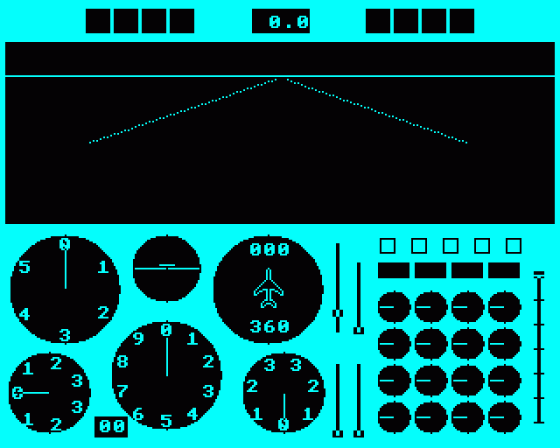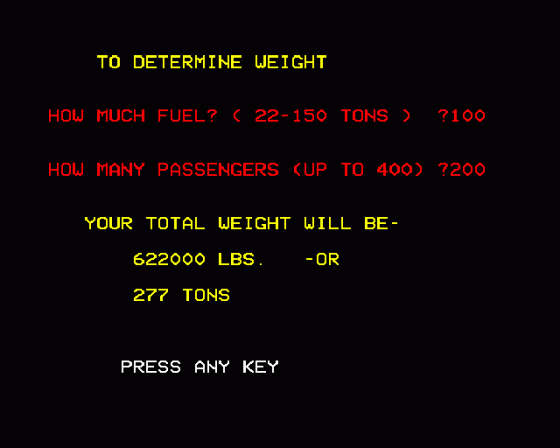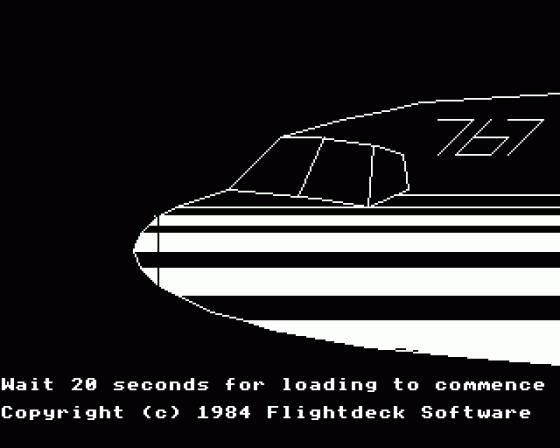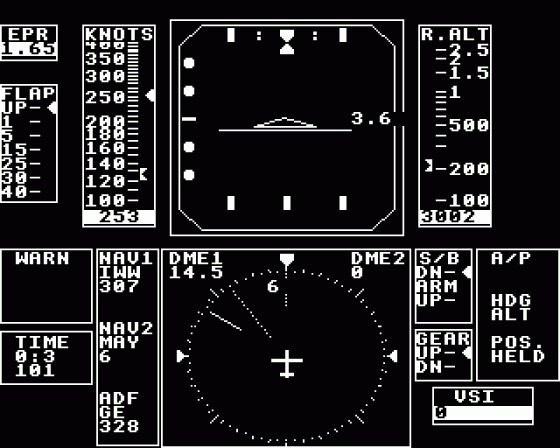
A&B Computing
 1st October 1984
1st October 1984
Categories: Review: Software
Publisher: Flightdeck
Machine: BBC/Electron
Published in A&B Computing 1.10
Have you ever seen those films where all the pilots on board a plane are simultaneously taken ill, and they look to you to land the craft safely? Well, even after many hours using each of these, I would still keep very quiet and let someone else fly the thing, it ain't easy!
There is a wealth of difference between the two, and this starts from the booklets which accompany each. The Dacc manual has sixteen small pages which are crammed full of information and include a full explanatioon of what the various dials and markers indicate. This is obviously useful, but even more useful would have been some kind of mnemonic alongside each dial. I found that I had crashed before I had located the right pace in the book.
The Flightdeck manual runs to 18 pages, much larger in size, although the printing is also enlarged. Several diagrams are included, and the person who wrote that a picture was worth a thousand words knew what he was on about. Rather authentic looking maps are included, so that you can choose to crash on either London, Luton or Birmingham. A series of lessons are suggested, and although my first tendency was to skip over them and to get on with it, they are vital for the inexperienced, like myself!

Also included in the Flightdeck pack are two key overlays, one for each micro, and these are absolutely necessary, as a total of 33 keys are used on the Electron, 34 on the Beeb. The overlays are clearly labelled, and make the exercise much more possible. Dacc rely on about 20 keys, although the information has to be gleaned from the booklet.
Both simulators have a joystick facility built in. The 767 program runs as well on either machine, and the main difference is sound on the BBC. This leads to the big question, which is the better of the two? Well in practically every respect, Flightdeck is the high flier! Everything has obviously been so well researched and tightly programmed that the airfields are not only accurately shown, but are also stored in the computer's memory to be the right distance and bearing from each other.
So it is feasible to take off from Stansted and land at Birmingham, provided you have enough ability. If you don't, don't despair, for there is even an auto-pilot option which is invaluable during the early stages. The instrument layout is far better, both in detail and clarity, and I suppose the ultimate test was that both tended to "fly" better on the Flightdeck simulator, and I enjoyed the experience far more.
Flying the 747 was difficult, with constant references back to the manual, and a feeling of apathy, but flying the 767 made the adrenalin flow.







